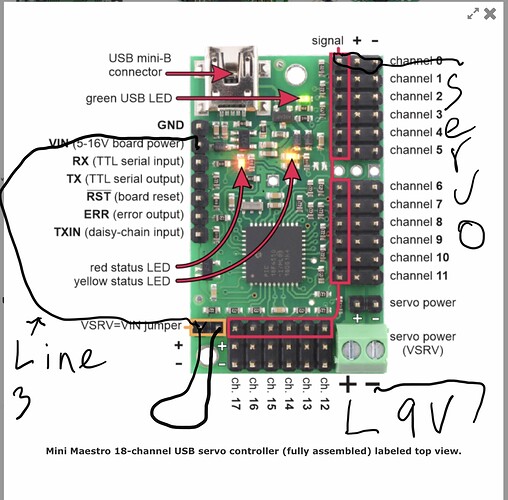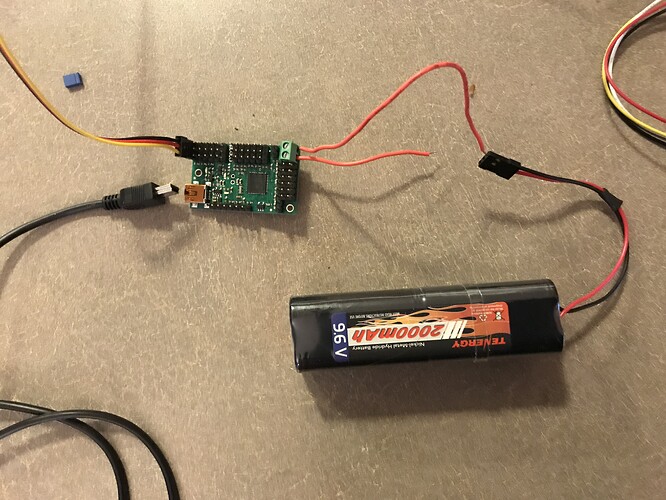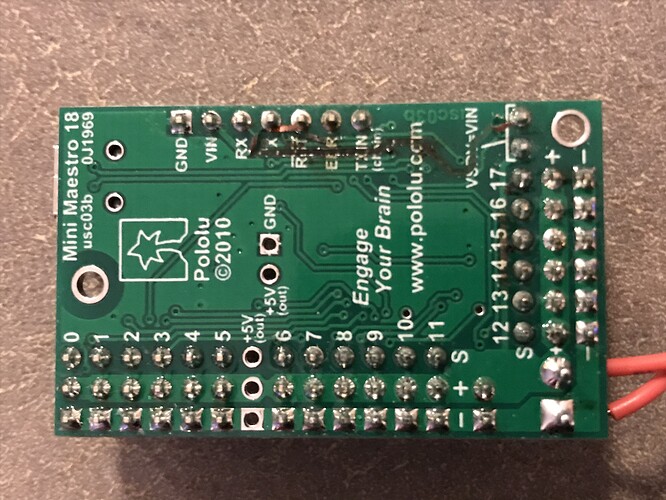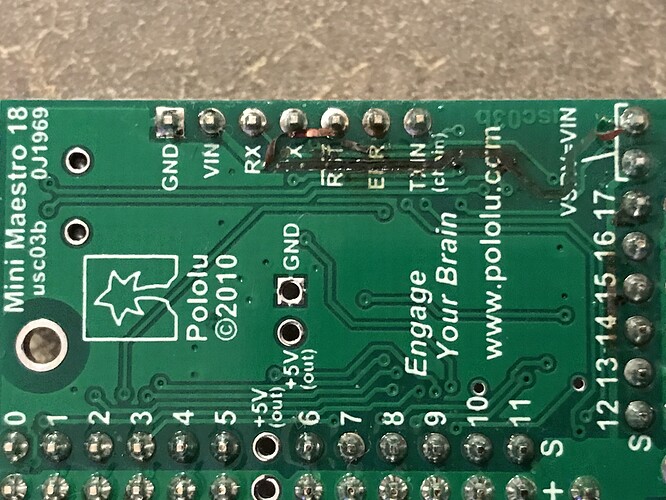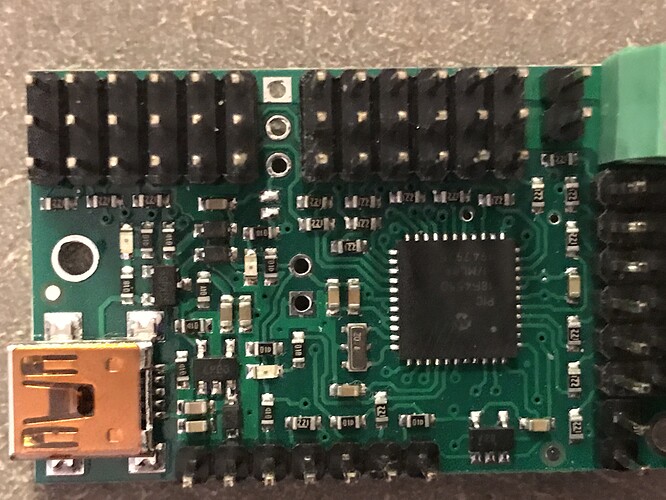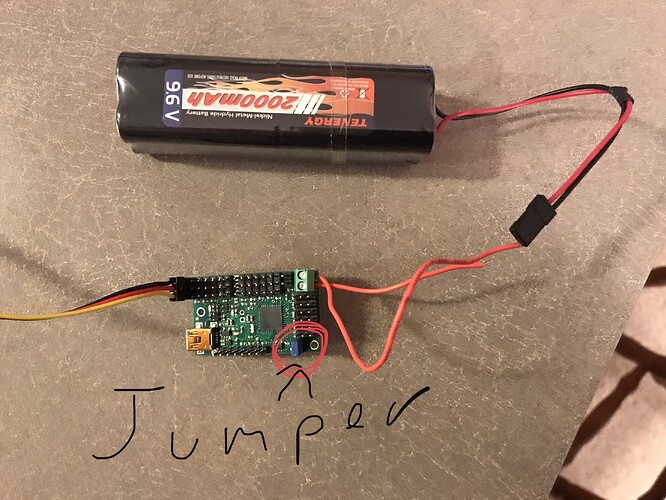I would like to know why, this module almost started on fire. I had 9 V hooked up to the servo power (VSRV), and the USB was hooked up to the computer everything was running well.
One servo on Channel 0. The servo was doing exactly what I wanted it to do. Download the program to the Mini Maestro board.
Then I proceeded to, unplug the USB and (9v servo power/VSRV). Then I switch the jumper over to the (VSRV = VIN JUMPER )pin, to shoot 9 V to the board. Then I hooked up the 9V servo/VSRV) and smoke poured out of the board.
I proceeded to look under a microscope and the (line three trace) in the picture diagram below was peeled off the board, it got so hot.
Please, please, please tell me what I did wrong, so I don’t do it again.
VIN tells me in a diagram that I can shoot 5 to 16 V board power. Not sure what went wrong?
I am sorry you had problems with your Maestro. I don’t see anything obvious in your description that would have caused a problem, but it sounds like there might have been some kind of short somewhere. The connection you have labeled as “Line 3” is not necessary for the Mini Maestro since it is just doing what the jumper accomplishes (the Micro Maestro does not have the jumper), but I wouldn’t expect it to cause a problem.
What were you using as your 9V power supply? Also, what servo were you using? 9V should be fine for the Maestro, but it is higher than most servos are rated for, so it might be possible that the servo failed in some way that caused excess current draw. Could you post some pictures of your system that show all of the connections that were made, as well as some close-up pictures of both sides of your Maestro board?
Brandon
Hi Brandon
First off thank you for, taking the time to reply to my question. To be honest with you I do not know why I grabbed a 9 V battery but I did. I have taken some pictures of the board and the set up that I used. The board still works, if you hook it up to the computer. But if I unhook the usb Cable from the board. There is no power to the board, because a trace is gone. I was trying to use the jumper, to power the board. So I could just use a board to run the servo and nothing else except for the battery. This is when my troubles happened.
If you look at the pictures that I’m going to put down below you can see the trace, it came right off the board.
So you are saying if I use the correct voltage and buy a new board, this should not happen again.
Here is a set up that caused the, trace to come right off of the board.
I will use 5 V next time.
Thank you for posting the pictures. I do not see anything obvious in your setup that would have caused that kind of damage. From the location and extent of the damage, it seems like it was probably caused by excessive current draw from the VIN side of the connection.
Just for clarification, did you actually add an external connection between VSRV and VIN (i.e. Line 3 in your diagram) or were you just referring to the trace on the board? If the VIN pin was somehow shorted to its neighboring GND pin, that could explain it. Also, it is hard to tell what kind of surface the board is sitting on; can you confirm that the surface it was on when you applied power is not conductive?
Brandon
VSRV and VIN (i.e. Line 3 in your diagram) just referring to the trace, that went up in flames. The board was sitting on a table top/counter.
The only other thing, that I can think of is maybe I still had the USB plugged into the computer and into the board, when I switched over the jumper. To put power to the board. Don’t know if this would do it but just asking. I am not sure but I will use 5 V from now on and I have purchased another board.
Thank you very much for your quick, feedback. And thank you for trying to help me out. I do appreciate it all.
It is safe to have an external power supply connected at the same time that USB is connected; when it is, the processor will be powered from the external supply. Connecting or removing the jumper while the board was plugged into USB should not have caused that issue either (although we still recommend disconnecting power before changing any connections to be safe).
A lot of current definitely flowed through that trace, which points to the VIN pin drawing a lot of current, so if there was nothing else in your system, maybe it was accidentally shorted to the GND pin by a stray wire.
By the way, the Maestro’s minimum operating voltage is 5V, so you might consider using 6V to give yourself a little bit of a margin.
Brandon
One last time, thank you for responding.
I will confess, I must’ve hooked up the battery backwards. Why I say this is because I have purchased a new one. Hooked up the 6 V battery. It works excellent.
1 Like

